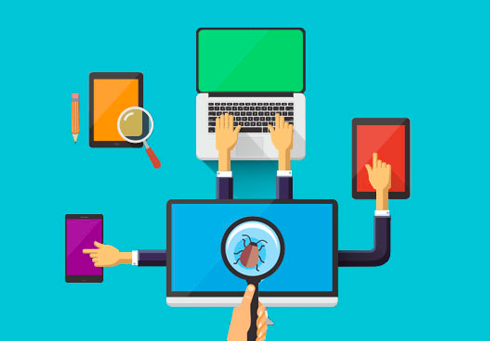Software Testing Methodologies
There are many different testing methodologies that can be used during the Software Development Life Cycle and you may have several different ones being used at your company.
Let’s review a few of the more common ones in this post and explain what they are, how they work and what the advantages and disadvantages of them are.
Waterfall development model
Waterfall software development tends to be among the less iterative and flexible approaches, as progress flows in largely one direction (“downwards” like a waterfall) through the phases of analysis, plan, design, develop, testing, deployment and maintenance.
Agile or Extreme development model
Agile came about as a new software development method to steer away from the issues development teams where having with the waterfall methodology. Instead of a sequential design process, the agile methodology follows an incremental approach. These sprints allow for bugs to be discovered, and customer feedback to be incorporated into the design before the next sprint is run.

“Wagile” development model
Wagile software development is a hybrid of both Waterfall and Agile software development methodologies, combining the strengths of both. There is not really an issue using this method, you can use the best bits that best suite your company and the customers needs. Whats not to like about that?
In my own experience, I have never seen either methodology truly used 100% of the time, it doesn’t seem like and effective way to work, of course there must be guidelines and a defined process in place but not everything can have the same approach. Sometimes it’s best that you react to the needs of a project rather than trying to fit the projects needs around your approach.

As we all know every project and every client is different. Using the “Wagile approach” enables teams to define requirements as in a waterfall way but adapt to changing requirements through continuous feedback and delivery. This hybrid method keeps the openness and tracking of the waterfall method, but embraces the adaptability and flexibility of agile allowing for continuous improvement and innovation.
Ultimatley, the best approach is the one that works best for you and your company and enables you to deliver your software development to the end user in a quick and controlled manner ensuring that quality can be assured along the way.

A Certified Salesforce Consultant, Certified SCRUM Master and ISTQB Qualified QA Lead with experience in a variety of industries. Over 8 years of testing experience with exposure to huge array of projects and initiatives such as Product Launches, Media Advertising and Government Mandatory Financial Projects. My current role is at BrightGen, who have been an official Salesforce Platinum Partner since the start of the programme. BrightGen provide Salesforce expertise and strategic thinking that enables organisations to transform their business to Cloud-based technology.

